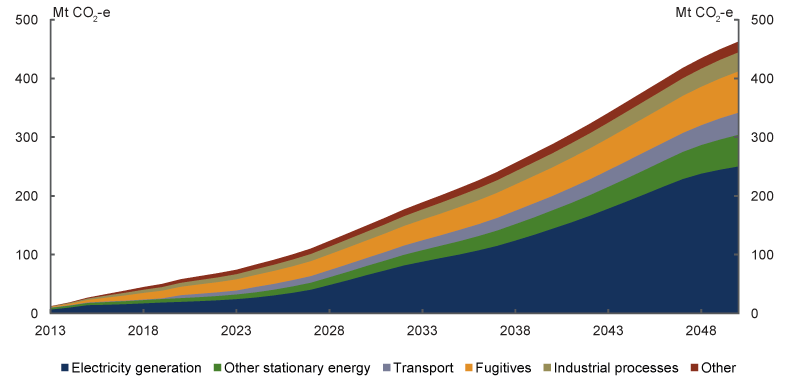A carbon price will give business certainty and will drive the transformation to a clean, strong and more sustainable economy for the 21st century.
A carbon price will gradually shift the economy towards cleaner energy, like natural gas and solar, and away from emission-intensive energy, such as coal.
Output continues to grow while emissions fall. This happens as industries move to lower emission energy and production inputs, and the mix of industries in the economy changes.
By 2050, the same amount of output as today would produce less than half as many emissions.
All sectors reduce their emissions, and the link between economic growth and carbon pollution is broken.
The most emission-intensive industry, the electricity generation sector, provides the most abatement.
Switching fuels in manufacturing and improving the efficiency of manufacturing processes are cost effective abatement activities, and they make up more than 10 per cent of total abatement.
The Carbon Farming Initiative plays an important role in reducing pollution in the land and waste management sectors, around 460 million tonnes of pollution will be reduced over the period to 2050.
The economy transforms over time as growth slows in polluting sectors, such as coal-fired electricity and coal mining, and growth accelerates in low and negative emission sectors, such as renewable electricity and forestry.
This is part of the transition to a stronger and more sustainable economy and the Government will provide assistance to industries to ease the transition and support jobs.
Emission reductions by sector
